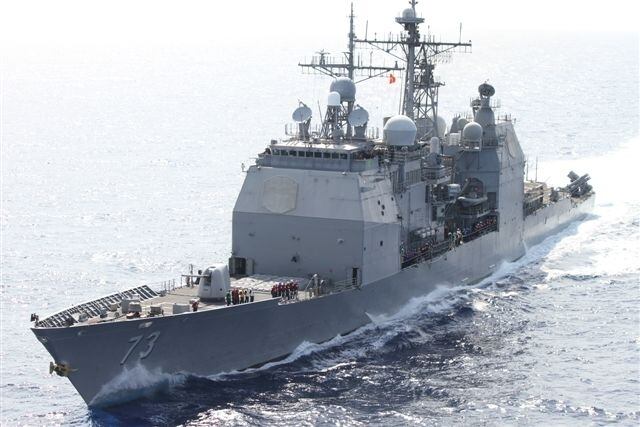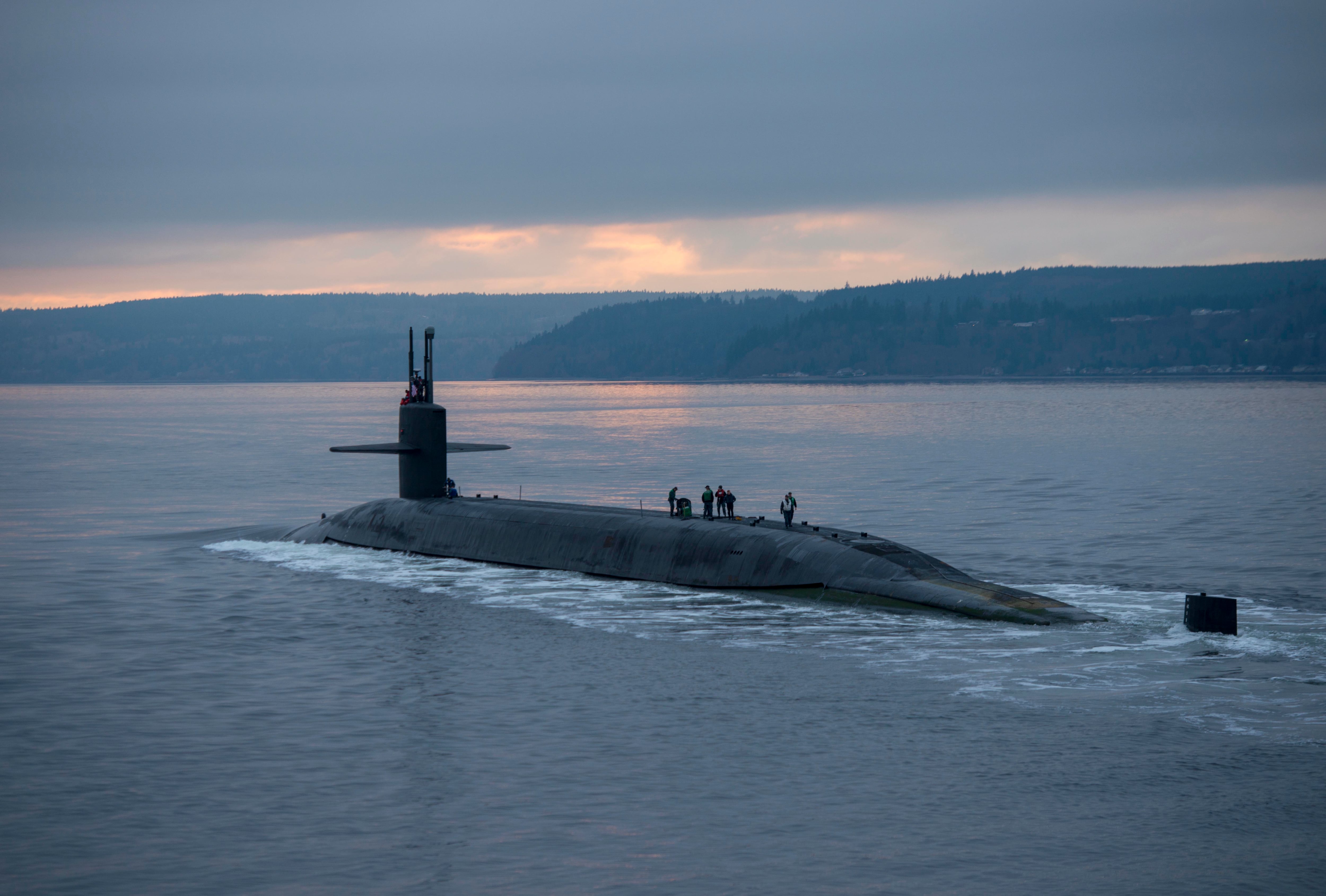WASHINGTON — U.S. Defense Secretary Mark Esper is calling for a 355-ship fleet by 2030, but for fiscal 2021, shipbuilding took a big hit in the Defense Department’s budget request.
The Navy’s FY21 budget request asked for $19.9 billion for shipbuilding; that’s $4.1 billion less than enacted levels for 2020. The ask also seeks in total four fewer ships than the service requested in its 2020 budget.
The hefty slice out of shipbuilding comes in the first year the Navy requested full funding for the first Columbia-class submarine, which Navy leaders have warned for years would take up an enormous portion of the shipbuilding account.
The Department of the Navy’s total budget request (including both base funding and overseas contingency operations funding) is $207.1 billion, approximately split $161 billion for the Navy and $46 billion for the Marine Corps.
RELATED

News of the cuts come a day after Defense News held an exclusive interview with Esper during which he backed a larger, 355-ship fleet, but said the Navy must refocus around smaller, lighter ships to fit within budget constraints.
In total, the Navy requested two Arleigh Burke-class destroyers, one Columbia-class submarine, one Virginia-class submarine, one FFG(X) future frigate, one LPD-17 amphibious transport dock, and two towing and salvage ships.
The budget reflected a cut to the Virginia-class sub and FFG(X) programs, each of which were supposed to be two ships in 2021, according to last year’s 30-year shipbuilding plan. Both cuts were forecast in a memo from the White House’s Office of Management and Budget obtained by Defense News in December. The memo also called for cutting an Arleigh Burke destroyer, but it appears to have been restored in trade-offs.
Another controversial move in the budget is the decommissioning of the first four littoral combat ships, likewise a move forecast in the OMB memo, as well as the early decommissioning of a dock landing ship.
The budget also requests a $2.5 billion cut to aircraft procurement over 2020’s enacted levels, requesting $17.2 billion. The budget calls for 24 F/A-18E/F Super Hornets fighter jets, 21 F-35C jets (between the Navy and Marine Corps), and four E-2D Hawkeye aircraft.
The budget also funds $160 million in shipyard upgrades, as well as research into the Common Hull Auxiliary Multi-Mission Platform to the tune of $17 million.
There is also $208 million in research and development for the DDG-1000 class, as well as $216 million for the Ford class. It also funds the procurement of two new large unmanned surface vessels.

Columbia cuts?
For years the Navy has warned that once the service starts buying the Columbia class, it’s going to have a significant impact on everything else the Navy wants to buy.
In a 2013 hearing before the House Armed Service Committee’s sea power subpanel, then-Navy Director of Undersea Warfare Rear Adm. Richard Breckenridge testified that failure to realign the Department of Defense’s budget by even 1 percent would have a devastating impact on the Navy’s shipbuilding program.
"The Navy recognizes that without a supplement this is going to have a devastating impact on our other general-purpose ships and is working with the [Office of the Secretary of Defense] and with Congress to identify the funds necessary, which I mentioned earlier represent less than 1 percent of the DoD budget for a 15-year period, to provide relief and fund this separately above and beyond our traditional norms for our shipbuilding budget,” Breckenridge said.
But with the rubber meeting the road, the Navy’s budget instead went down by almost 20 percent.
In an interview with Defense News, Esper rejected the idea of moving Columbia out of the Navy’s shipbuilding account, even as he called for a much larger fleet in the future.
RELATED

The Navy must tighten its belt to reduce the impact on the budget, Esper said, adding that the Air Force is in a similar financial bind.
“Clearly the Columbia is a big bill, but it’s a big bill we have to pay,” Esper said. “That’s the Navy’s bill. The Air Force has a bill called bombers and ground-based strategic deterrent, so that’s a bill they have to pay.
“We all recognize that. Acting Secretary [of the Navy Thomas] Modly and I have spoken about this. He believes, and I think he’s absolutely correct, that there are more and more efficiencies to be found within the department, the Navy and the Marine Corps, that they can free up money to invest into ships, into platforms.”
It is unclear, however, where the Navy will be able to find that money. Despite years of record defense budgets under the Trump administration, the Navy — at its current size of 294 ships — is struggling to field sufficient manpower. It has also struggled with the capacity of its private shipyards and is scouring the country for new places to fix its ships.
Furthermore, there are questions about whether the Navy is adequately funding its surge forces, given that the Abraham Lincoln Carrier Strike Group was stranded on a Middle East deployment for more than 10 months because the carrier relieving it had a casualty.
The Navy declined to use its surge forces and instead extended Abraham Lincoln’s deployment, according to Chief of Naval Operations Adm. Michael Gilday.
Esper said the Navy must look to smaller ships to grow, even though the current budget also defunds a second FFG(X) planned for this year. The FFG(X) was developed to field significant capabilities for about half the price of an Arleigh Burke so they could be bought in greater number.
“We need to move away from large platforms,” Esper said. “We need to move to smaller and more ships. We need to move to optionally manned.”
The idea of moving to a more lightly manned fleet with an unmanned option is currently en vogue with the Navy, and it’s partly driven by the fact that 35-40 percent of the shipbuilding budget is eaten up by the Columbia class for the foreseeable future. That’s something that all parties are coming around to, Esper said.
“[Acting Secretary Modly] agrees, so there’s no doubt he’s on board," Epser said. “I know the chairman and I have had the same conversations. I’ve heard from members of Congress. If you go look at the think tank literature that’s out there, they will tell you generally the same thing. We need to move forward in that direction.”
Optionally manned vs. optionally unmanned
Experts disagree over the degree to which the Navy should pursue a more lightly manned construct, and the difference appears to be philosophical: The Navy is developing an “optionally manned” ship; a recent Center for Strategic and Budgetary Assessments study led by analyst Bryan Clark is proposing an “optionally unmanned” ship.
It may seem like a small difference, but building a ship designed from the ground up to support humans is a major difference from a boat that can accommodate a few humans if the operators want to.
The Navy is currently pursuing a large unmanned surface vessel, or LUSV, which is based on a commercial offshore support vessel, as part of an effort that started in the aegis of the Office of the Secretary of Defense’s Special Capabilities Office and is now run by the Navy.
The service describes its planned LUSV as an external missile magazine that can significantly boost the number of missile tubes fielded for significantly less money than buying Arleigh Burke-class destroyers, which cost nearly $2 billion per hull.
The Navy has discussed equipping the LUSV with the ability to house sailors, but the vessel would be largely designed as an unmanned platform, which would save money because there likely won’t be a need for structure that supports human habitation. Sailors supporting an LUSV might use a port-a-potty and eat MREs rather than building an at-sea septic system and galley, for example.
But therein lies the problem with the LUSV, according to the study by CSBA: What would the Navy do with those vessels, which it intends to buy in mass, when it’s not trading missiles with China?

Before the Navy gets too far down the road of fielding an optionally manned LUSV, the Navy should pony up for a more expensive but more useful corvette that, in the event of war, could be unmanned and used as the envisioned external missile magazine, the study said.
“The Navy’s planned LUSV would also be an approximately 2,000-ton ship based on an [offshore support vessel] design,” the study read. “In contrast to the optionally manned LUSV, the DDC [corvette] would be an optionally unmanned vessel that would normally operate with a crew. By having small crews, DDCs could contribute to peacetime training, engagement, maritime security, and deterrence.”
In other words, for every scenario short of war, there would be a small warship that can execute normal naval missions — missions that ideally deter conflict from occurring in the first place.
The study described a vessel that would be crewed with as many as 24 sailors, but would retain the ability to be unmanned in a crisis.
“Instead of procuring an optionally manned LUSV that may be difficult to employ throughout the spectrum of competition and conflict, CSBA’s plan introduces a similarly designed DDC that is designed to be, conversely, optionally unmanned and would normally operate with small crews of around 15–24 personnel,” the report read. “DDCs primarily armed with offensive weapons would serve as offboard magazines for force packages.”
David B. Larter was the naval warfare reporter for Defense News.








